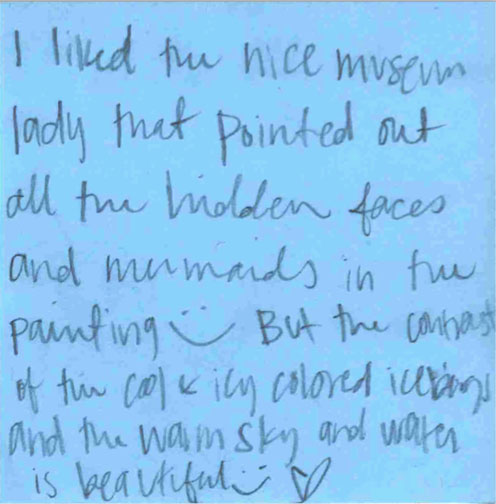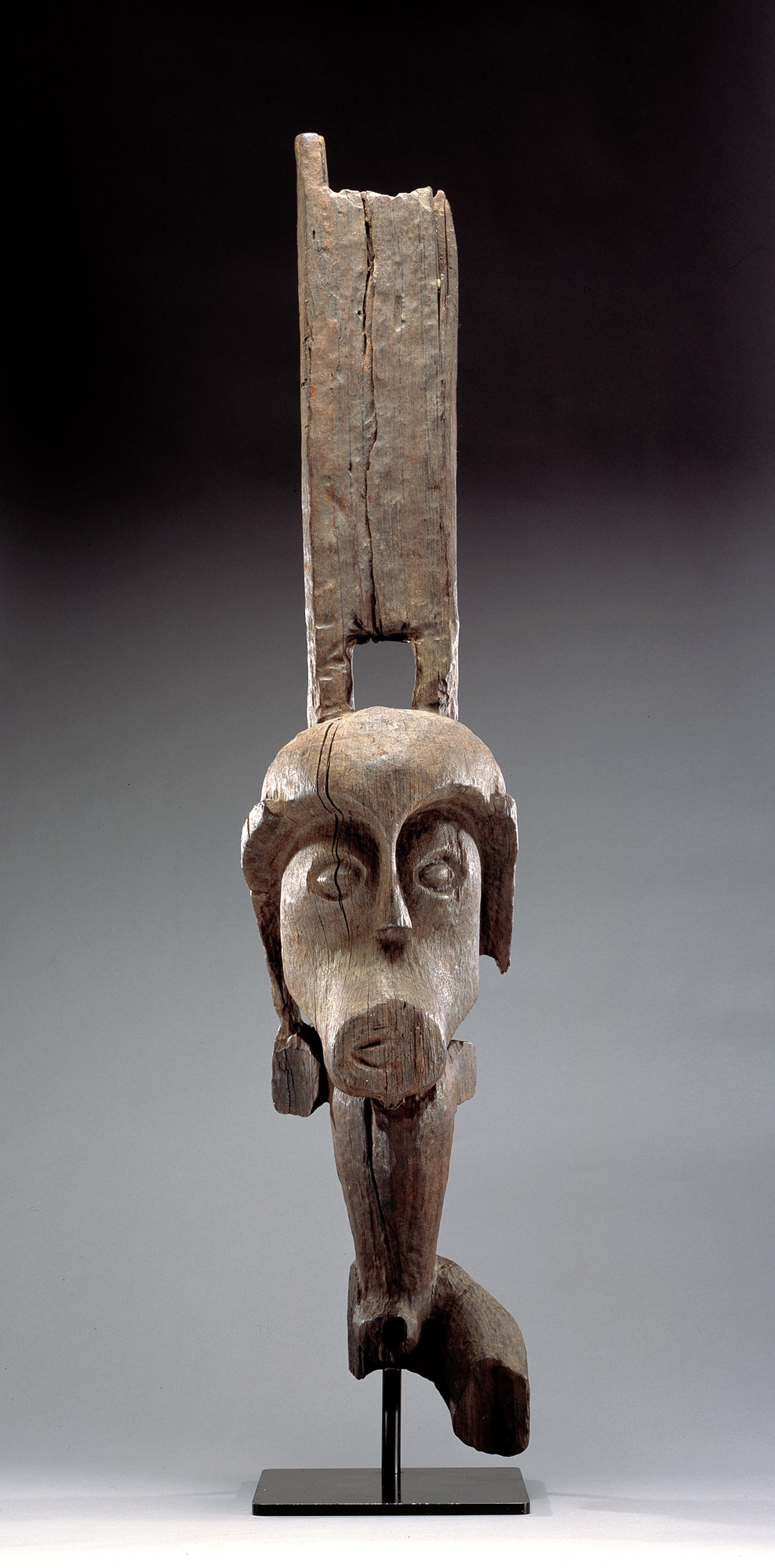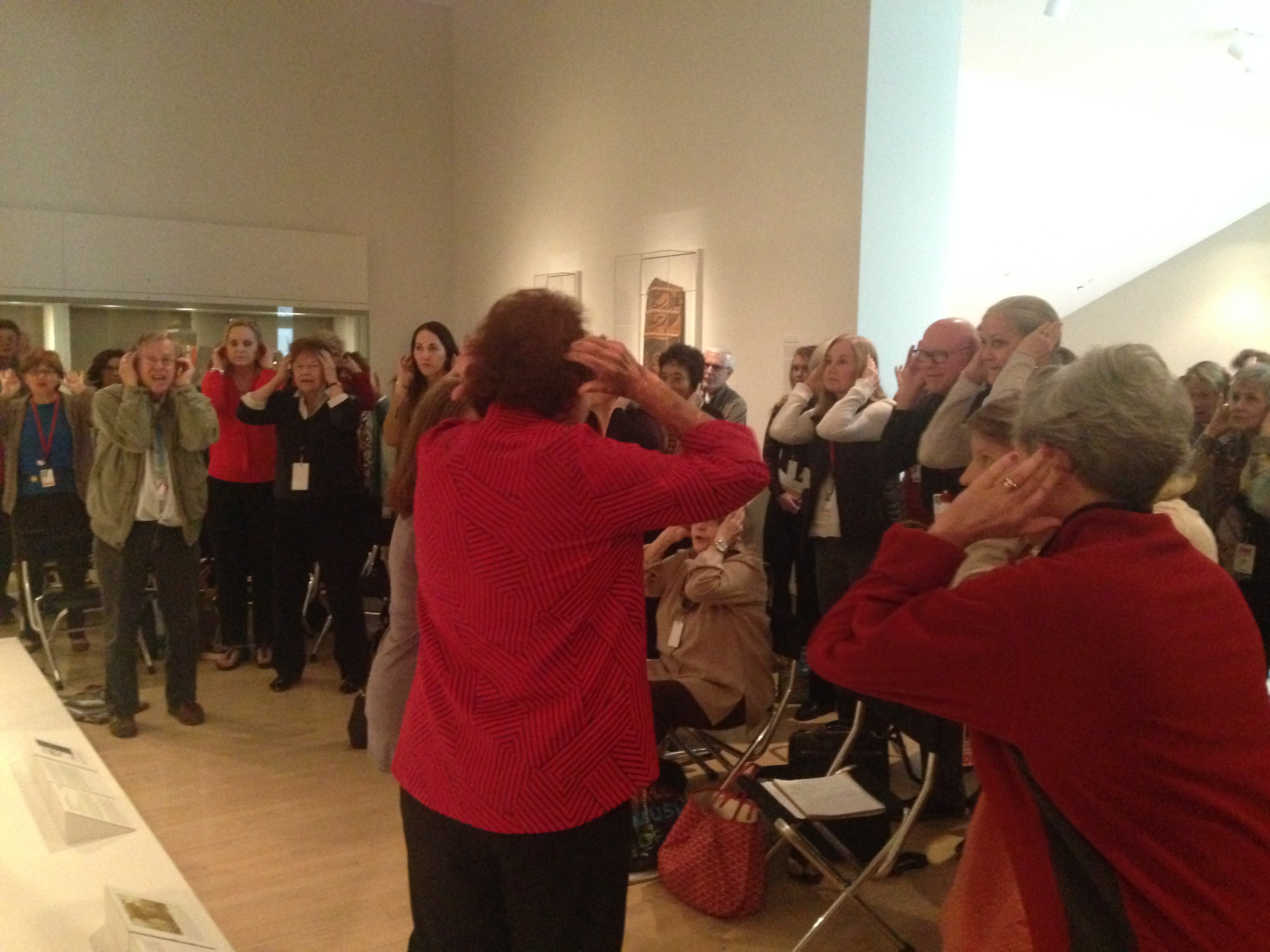When you find yourself in a room with Rose Davis, it is clear that she is not someone who goes unnoticed. She is warm and charismatic, a person who naturally bonds with a wide range of visitors and staff at the Museum. While it’s her job to observe visitors and make sure they engage with artwork safely, Rose often goes the extra mile and offers her own special discoveries and insights into the Museum’s collection.

Rose with The Icebergs, Frederic Edwin Church, 1861, Dallas Museum of Art, gift of Norma and Lamar Hunt
Rose has been a gallery attendant at the DMA for only 10 months, but in that time she’s grown very fond of one work of art in particular, The Icebergs by Frederic Edwin Church. About a month ago, during a walk through of the 4th floor galleries, Rose engaged me in a conversation about The Icebergs. She asked us if we’d ever noticed the hidden figures in the painting. Rose excitedly told us about her growing collection of hidden characters in the painting, noting to us that she is continually discovering more as she spends more time with the piece.

Two weeks later, I came back to The Icebergs with Rose and asked her to walk me through each hidden figure she’d discovered. Her first discovery was the gorilla. Then one day when the gallery was empty, she took her first “closer look” and the rest snowballed: a mermaid, a mummy, animals, faces in the ice, and many more. With some laughter in her voice she explained to me that when she first began sharing her discoveries with others, they were skeptical of her, but as soon as they could find one figure in the painting they’d be itching to find another. Below are some of my favorites she shared with us (which I’ve outlined in red). What hidden images will you discover when you look closely at The Icebergs?
- Side profile of a gorilla
- The mummy
- Looks eerily similar to an sculptures on Easter Island
- Panda
- A bearded face…
- The back view of a dog… a Westie, perhaps?
We often think of gallery attendants as people who protect works of art by keeping us from getting too close, but as I’ve learned from Rose, you can “get close” to art in different ways, like absorbing the little details in a painting. Gallery attendants spend a lot of time with our permanent collection, so don’t be shy! Next time you’re exploring our galleries, say hello and ask them what they know. The answers might surprise you!

A visitor’s post-it note about Rose left at our Testing Zone, which currently highlights various writing styles for The Icebergs wall text.
Kerry Butcher
Center for Creative Connections Coordinator














